When I finally sat down to write this, I felt like I’d been teasing this recipe for literal years. As I went through my photos and notes, I realized that’s because I have! The first time I honked about a beancurd breakfast sandwich was in this reel from August 2023, at which time I ambitiously asked my dear followers to drop a 🍄 in the comments if you want the recipe. Five commenters even did that! And yet, though typically only moved to action by external validation, I didn’t do it.
In January of this year, when I figured out a more make-ahead method, I honked about it some more — in my stories, on Substack Notes, on Bluesky even — and kept promising “recipe coming soon!” But still I put it off. Now that I’ve finally forced myself to follow through, I asked myself why I’d been dragging my feet. The breakfast sandwich is, after all, a banger recipe that I stand behind and genuinely eat all the time.
Upon reflection, I think it’s because I have a fear, maybe irrational, that no one will actually make it. For readers who cook with beancurd skin all the time in traditional ways, will using it for a North American-style breakfast sandwich seem weird or dumb? And for those who don’t normally use it, will it seem too inaccessible and annoying to find? I do feel like beancurd skin (most frequently referred to in North American food media as yuba, its Japanese name) has become more well-known outside of East Asian cultures in recent years. But I’m not sure if it’s one of those things the uninitiated are happy to read about and find interesting, but not actually seek out and cook — which is fine of course! I read recipes just for fun all the time! But still. Allow me to get pedantic and preachy for just a minute so you can make a truly informed decision on whether or not to buy and cook with beancurd skin (spoiler: the right decision is to do so! ) If you already know all about yuba and its myriad fabulous uses, feel free to…
What is beancurd skin aka yuba?
Beancurd skin goes by a variety of names (beancurd skin, soy milk skin, tofu skin, and yuba to name but a few) and is sold in different forms. But all of it is made the same way — by heating up fresh soy milk until it forms a skin on its surface. You know how recipes for pudding and stuff are always warning you to cover the surface with plastic immediately so no skin forms? In this case, that’s what we’re courting. Once lifted from the surface of the milk, the protein-rich sheets are sometimes eaten fresh and pretty plain — especially in Japan — or dried to varying degrees before adding to dishes. Watch this video for a wildly romantic beancurd skin-making experience:
Or this one if you’d rather just get to the point:
It’s really not hard to make — I did it myself once with store-bought unsweetened soy milk as depicted below. But without a gigantic pot with enough surface area to make huge sheets, the process takes forever. I think I was at it for about three hours before I had enough to put in the pictured stir fry. I’m sure it would be pretty incredible if I’d also made the soy milk from scratch, and maybe I’ll try that one day, but honestly I think the store-bought stuff is just as good as homemade with store-bought milk.
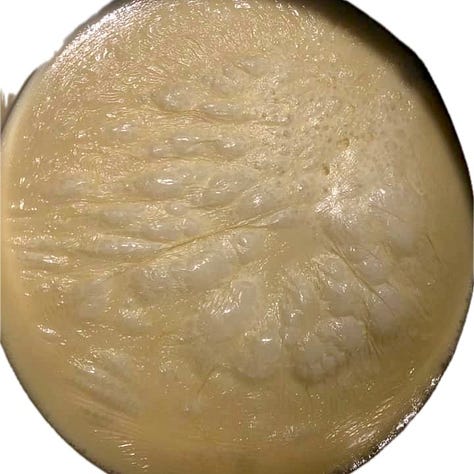
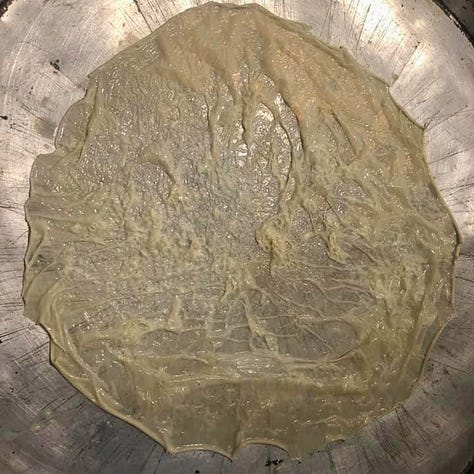
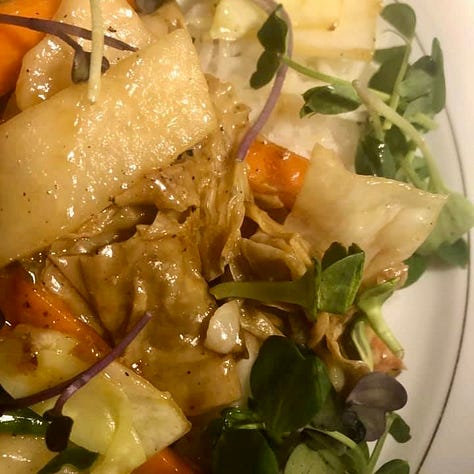
How does one use it?
According to Nami Chen of Just One Cookbook, in Japan fresh yuba is enjoyed “with a trickle of soy sauce and wasabi, just like sashimi,” or used to top soups or vegetable dishes. In Chinese cuisine, it is used in hot pot; dim sum beancurd skin rolls; and the Buddhist classic, vegetarian duck (or goose), to name but a few.
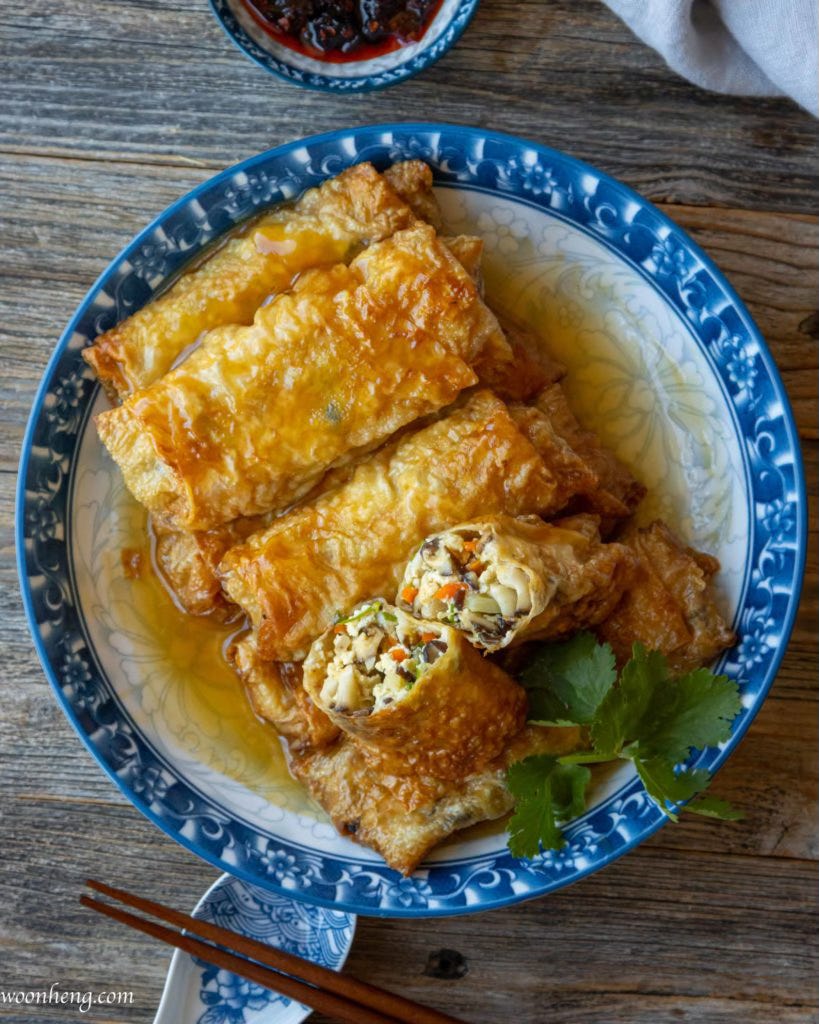
In the USA, a few chefs I know of who are taking beancurd skin in delicious non-traditional directions include Brooks Headley, who makes fabulous yuba sandwiches at Superiority Burger; Sola El-Waylly’s oven-crisped yuba that she serves in a summery salad; and more recently,
who used the skins as a replacement for pasta in lasagna (subscribe to get his own yuba deep-dive, dropping soon!)
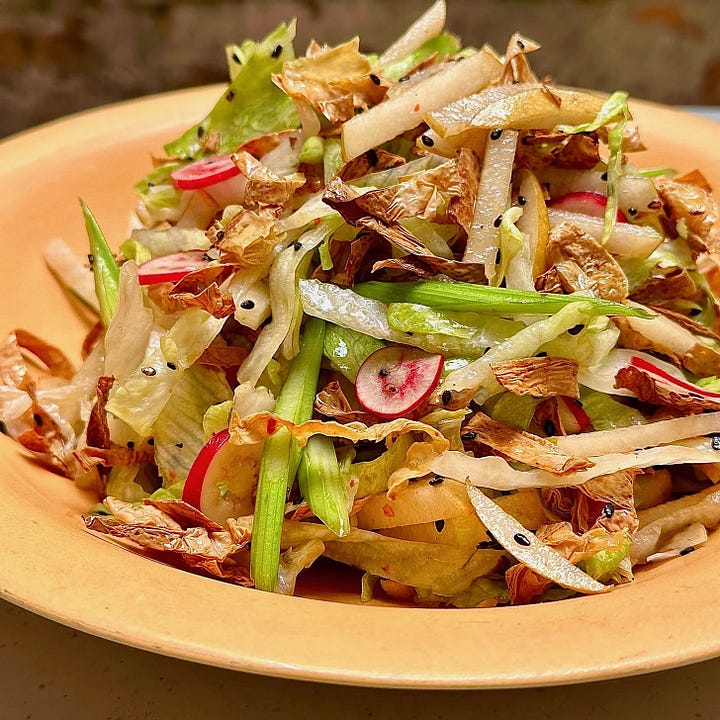
My friend
with whom I share a telepathic food connection made a dessert with homemade beancurd skin (!!!) just the other day to celebrate her graduation from culinary school (yesss Melisa!!!) She did a vegan riff on the milk leaflets from this recipe. I’m so intrigued by a sweet beancurd skin application, and Melisa’s looks so beautiful! I want to try a maple-flavoured one! (Breaking news during final edit that I don’t have time to incorporate more seamlessly: I just noticed Hannah Che mentions a Chinese sweet, fried yuba treat in her book as well, bringing home my forever point: beans: they’re for dessert!)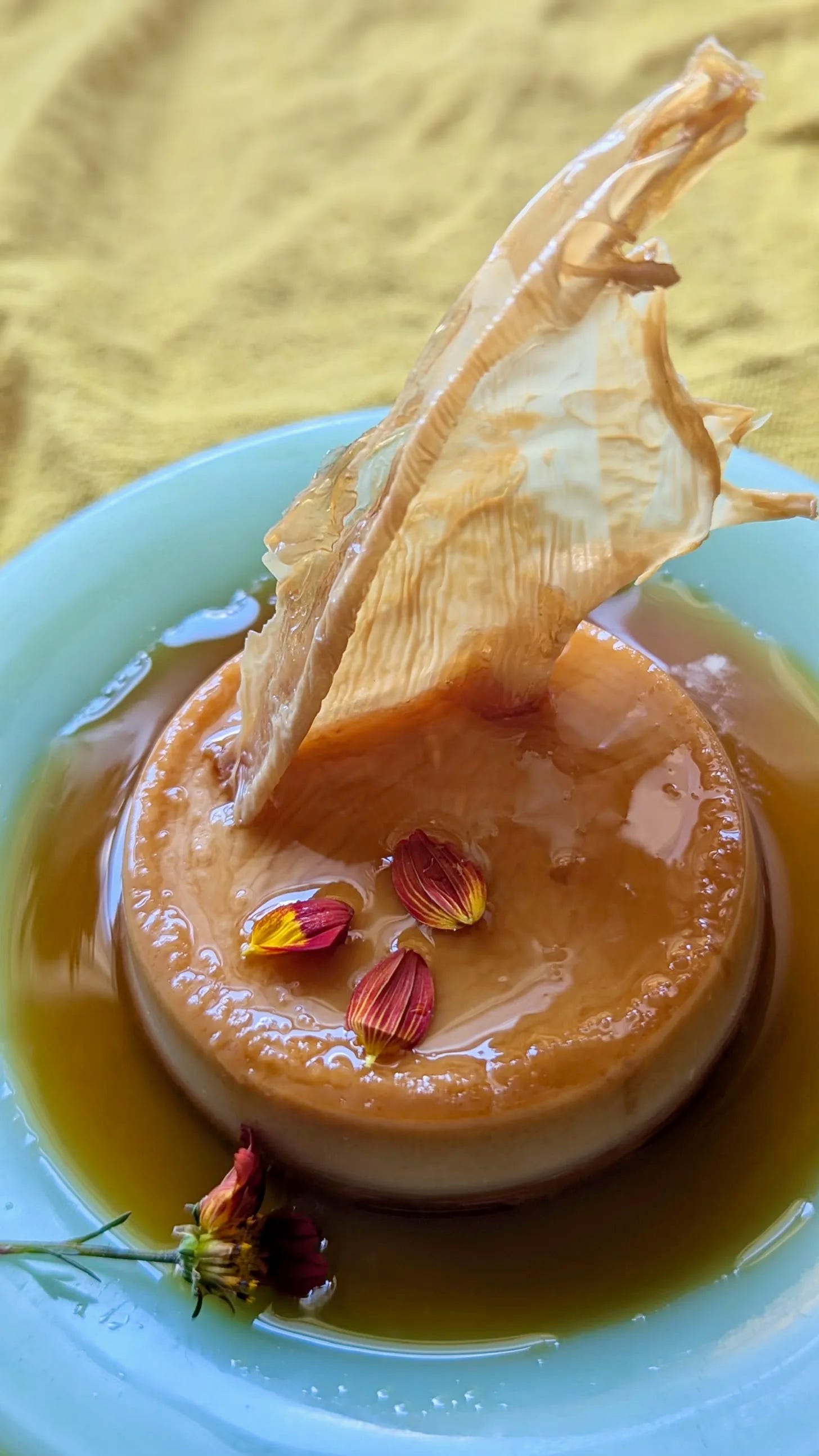
For my part, I’ve been using beancurd skin in a variety of ways over the past several years, but learning new techniques from both
and El-Waylly turned me into a serious yuba-head. I had seen some vegan influencers making “drumsticks” by wrapping yuba around a stick, then pan-frying. But I had my doubts about this being good. Wouldn’t it all just unravel while eating? Surely the sheets wouldn’t adhere to each other in a coherent, succulent fashion? But when I read about sùjī in Che’s The Vegan Chinese Kitchen — a chicken-style roast made from beancurd skin developed by Buddhist monks hundreds of years ago — I decided to give the technique a go (longtime readers of this newsletter know I am obsessed with Che’s book).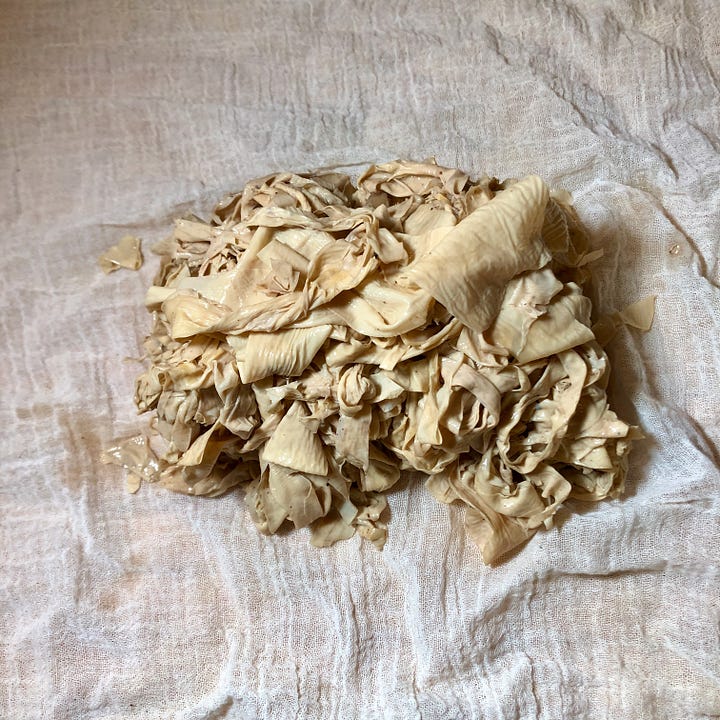
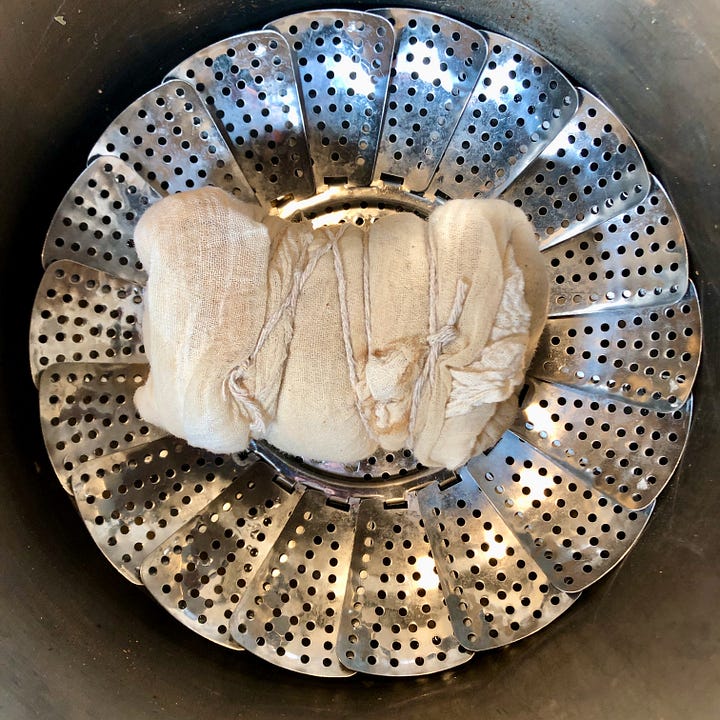
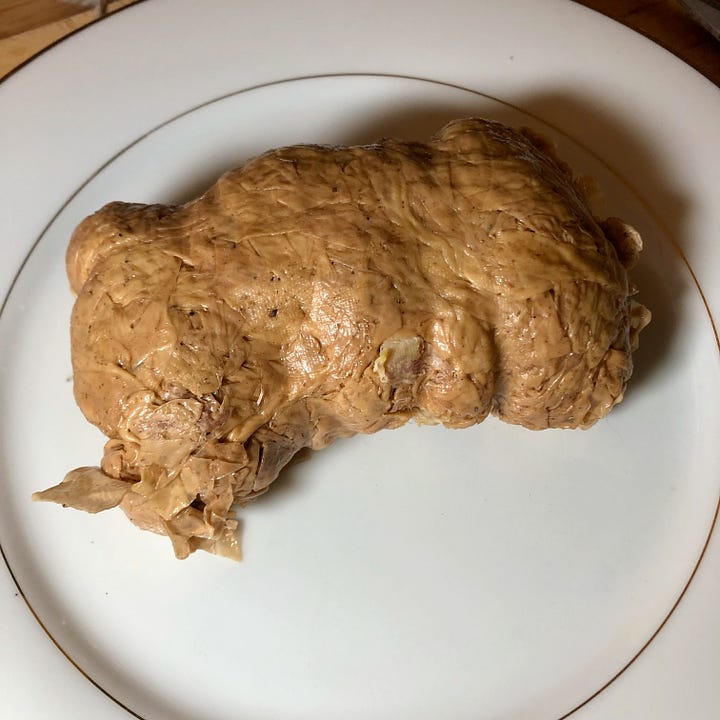
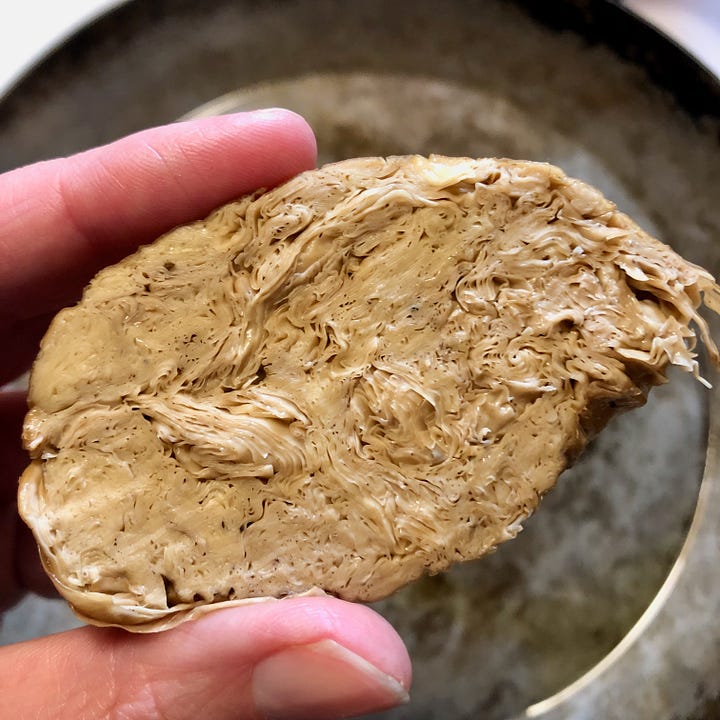
Well colour me corrected! The sheets melded together beautifully during steaming, creating a lovely, meaty texture. This revelation, alongside Che’s straight up using beancurd skin to replace egg in the iconic Chinese dish of scrambled eggs with tomatoes (a substitution she learned from a vegan restaurant in China) blew my mind open about yuba’s possibilities.
El-Waylly typically roasts her yuba in a very hot oven and gets it very crispy. I do like simple “yuba chips” atop a risotto or something for extra protein and crunch. But as I experimented with this technique, I realized that if I really piled up the skins in the pan, I got a combo of softer pieces knit together in a chicken-esque way, as well as crispy bits on top. People love to say that tofu soaks up flavour like a sponge, but I feel like beancurd skin asks tofu to hold its beer in that regard. Since learning about these properties, I’ve been using beancurd skin in a variety of chicken-esque ways — most recently this riff on Korean-style chicken wings. Very good!
All of this reading and riffing finally led me to the make-ahead-able eggy patties I’m sharing today.
Where can I get it?
Many chefs swear by Hodo’s fresh yuba, a brand widely available in the US. We can’t seem to get it in Toronto (if you’ve seen it, please let me know where!) so I’ve never tried it myself, but I’m sure it’s very good and I’ve tried to provide notes on using it below. One thing about Hodo, though, is it’s pretty expensive. I fear that lots of people buy this brand because of the chef endorsements, and maybe because they’re also not aware that yuba goes by many other names and is sold in many other (cheaper) forms. (I also suspect that yuba is the more appealing name in food media because the more common translation of Chinese products, “beancurd skin” grosses people out, even as endless recipes advertising crispy chicken skin — actual skin! not soybeans! — are apparently drool inducing, but. I. Digress.)
If you live in a city with a Chinese or pan-Asian grocery store, there’s a good chance there’s beancurd skin available, either fresh in the refrigerator (less common), frozen in a big semi-circular or rectangular package, or dried into sticks in the pantry aisle. You can also order online here in the US.
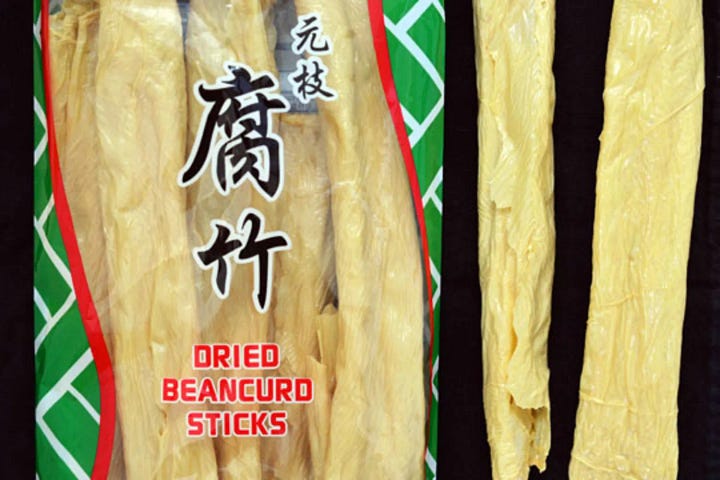
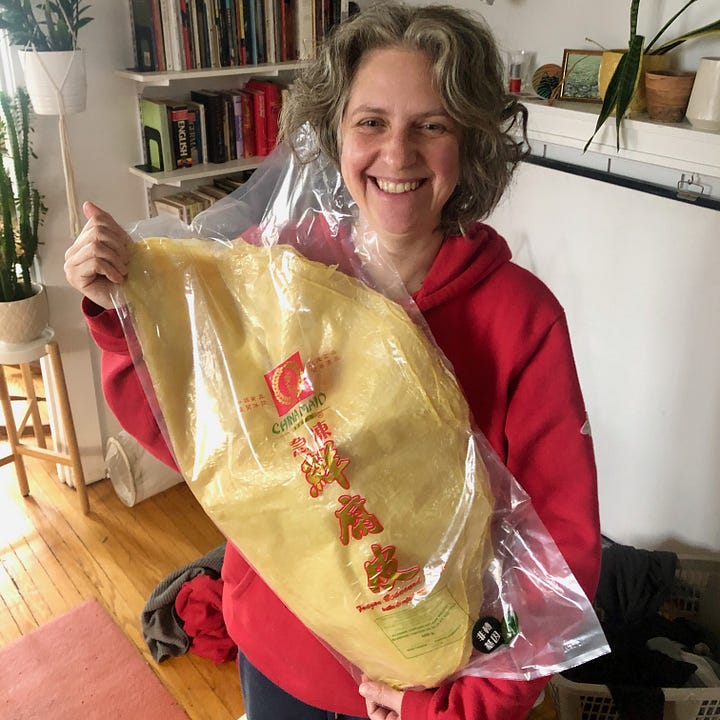
I use the frozen kind most often, which is typically a semi-dried beancurd skin. The beauty of dried yuba is you can rehydrate it to your specifications, and add flavour while doing so. If you’re in Toronto, you can grab the giant semi-circular guy I’m lovingly cradling above in the freezer section of any grocery store in Chinatown and any T&T.
Beancurd Skin Breakfast Sandwich
Since reading Hannah Che’s veganized egg and tomato recipe (linked above) I’d been making a breakfast sandwich with beancurd skin I simply “scrambled” in a pan for a few minutes, then added to a sandwich. But though pretty fast and easy, it’s not something everyone has time to do every day, and sometimes I need my breakfast to be grab-and-go. Drawing on what I’d learned from my chicken-esque experiments with El-Waylly’s technique, I tried baking my beancurd scramble in little nests at 350 degrees. Just as I’d hoped, they fused together into nice little patties with a lightly crisp outside and soft, somewhat scrambled-egg like interior. They’re also amenable to mix-ins like sliced green onions, fried mushrooms, vegan cheese or bacon or whatever. Customize as you see fit! I bake up a batch, freeze them, and just reheat in the microwave and plop atop my english muffin or sourdough toast with a little vegan butter or mayo or tomato or vegan cheese or mushroom bacon or nothing at all!
Ingredients for 8 patties:
200 grams semi-dried bean curd skin
(If you’re using fresh, like Hodo, I would use two of the 142 gram packages. You might end up with a few less patties. If you only have the dried beancurd sticks, I’d suggest soaking them overnight to get them soft enough for this recipe. I’m not sure what weight of the dried to use, but maybe try 150 grams?? Sorry!)1/2 tsp fine sea salt
3-4 tbsp olive oil
1 tsp turmeric
1 tsp garlic powder
Lots of fresh black pepper
Kala namak to taste (aka black salt (though it’s pink in colour), available at Indian grocery stores; has a sulphurous, egg-like taste), optional
Mix-ins of your choice such as a sliced scallion or two, fried mushrooms, diced peppers, vegan bacon, vegan cheese shreds, whatever. Just make sure it’s quite finely chopped and there’s not a crazy amount so that the mix-ins can get nicely stuck into the beancurd skin as it cooks.
Method:
Using kitchen scissors, cut beancurd skin into approximately two-by-one-inch strips as pictured below. Place strips into a bowl and cover with tap water. Add the 1/2 tsp salt. Soak for about five minutes, stirring occasionally. The beancurd skin will become a much lighter colour when it’s sufficiently soaked as pictured below. NOTE: If you’re using fresh beancurd skin like Hodo, you can skip the soaking step, it’s ready to be marinated.
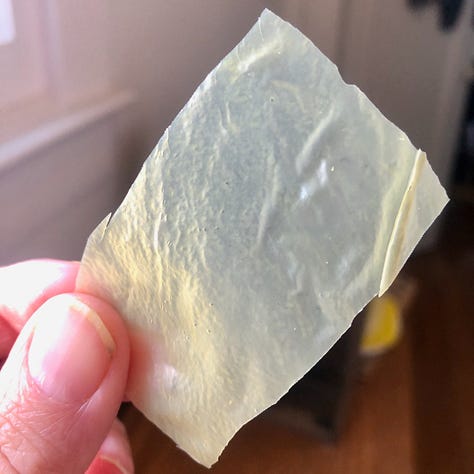
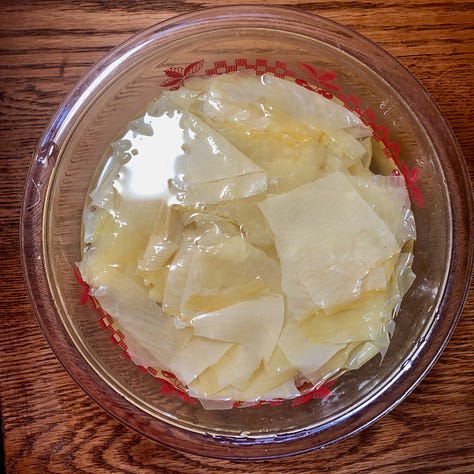
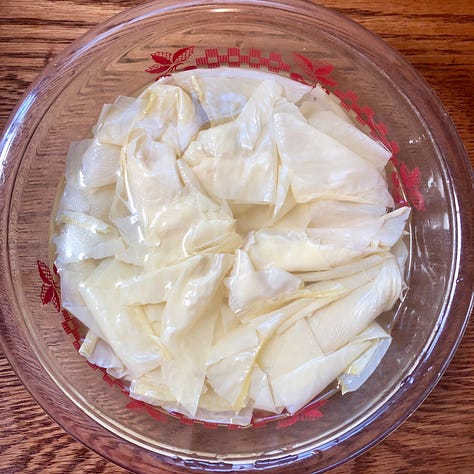
Preheat the oven to 350 degrees F. Drain the beancurd skin in a colander and wipe out the bowl. Add olive oil, turmeric, garlic powder, and pepper to the bowl and stir together with a fork. You can add a little kala namak to this mixture, too, but I usually reserve it and sprinkle it on top in the end. I find you get more sulphur flavour that way. If you’re going to do that, you may want to under-salt a tiny bit at this stage.
Squeeze water out of the beancurd skin with your hands so it’s no longer soaking wet, and add to the marinade in the bowl. Toss with your hands until it’s all well-coated and yellow from the turmeric. Add a little more oil if you don’t seem to have enough to coat everything. Add your mix-ins of choice and give everything another good toss. You can taste a piece for seasoning.
Line a baking sheet with parchment paper and portion the coated beancurd skin into nests. I usually get about eight nests from this amount (four per quarter sheet pan like below), but if you like them larger or smaller, feel free. You want them to be a little bit thicker than you want your final patty to be because they’ll shrink as they bake. If there are mix-ins falling out, tuck them in amongst the folds of yuba.
Bake for nine minutes, then gently flip over each patty with a spatula. They should be adhering together pretty well already, but are a bit delcicate. If they fall apart some while flipping, just pat them back together again. Bake again for nine minutes. They should be dry and a wee bit crispy on the outside, but not much browning, and still feel fairly soft when you press down. Everyone’s oven is different, so you may need to adjust bake time if they’re getting too crispy or staying too soft.
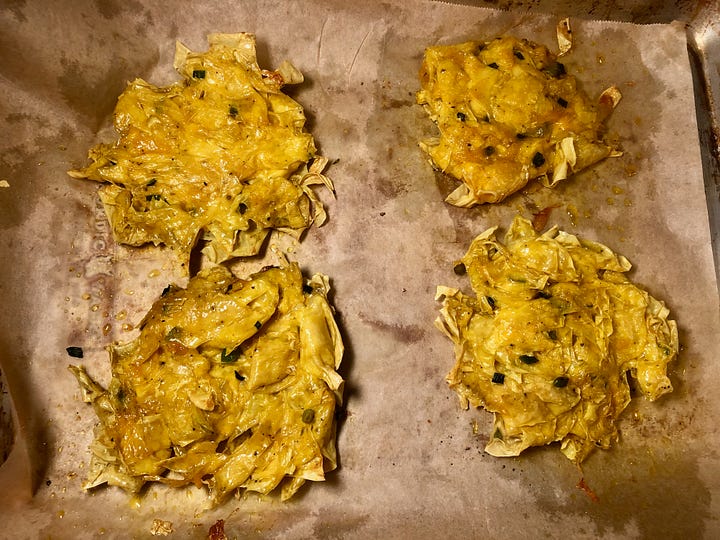
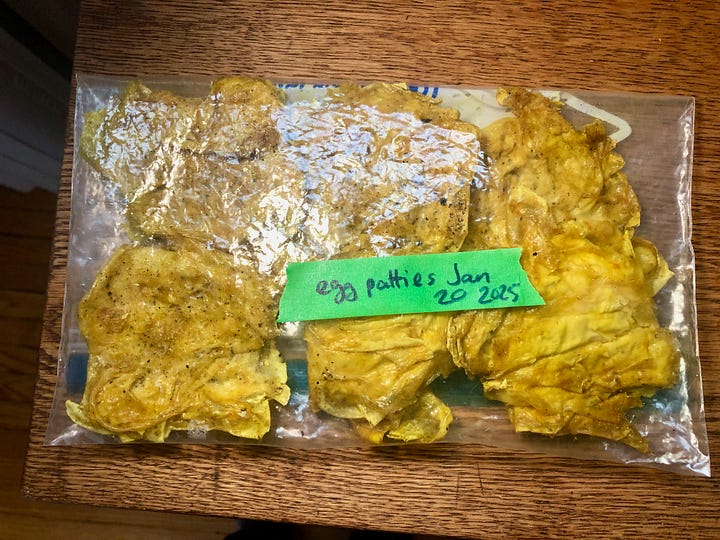
These are now ready! Serve on bread product of your choosing immediately sprinkled with kala namak (if you like) and whatever condiments you prefer (I like vegan butter or mayo, sometimes sliced tomato or fried mushroom). You can also allow them to cool and then freeze for easy breakfasting ahead! I just pop them in a bag or a Tupperware.
If prepping from frozen, I microwave on high for about a minute and thirty seconds till hot. I sometimes put cheese on top for the microwaving if I didn’t put any in the patties themselves.
That’s it, let me know if you have questions, beancurd skin forever, let’s eat it, guys!





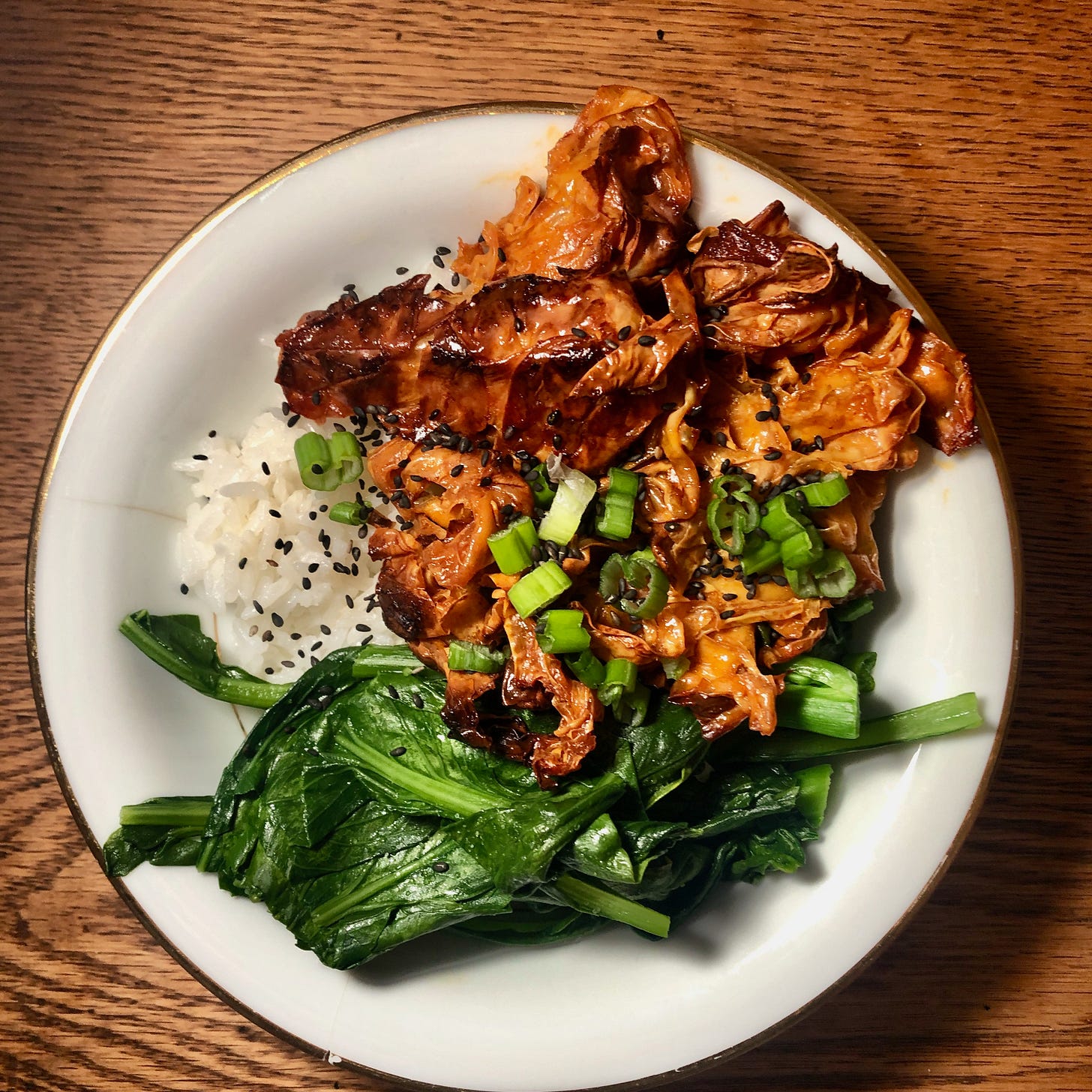
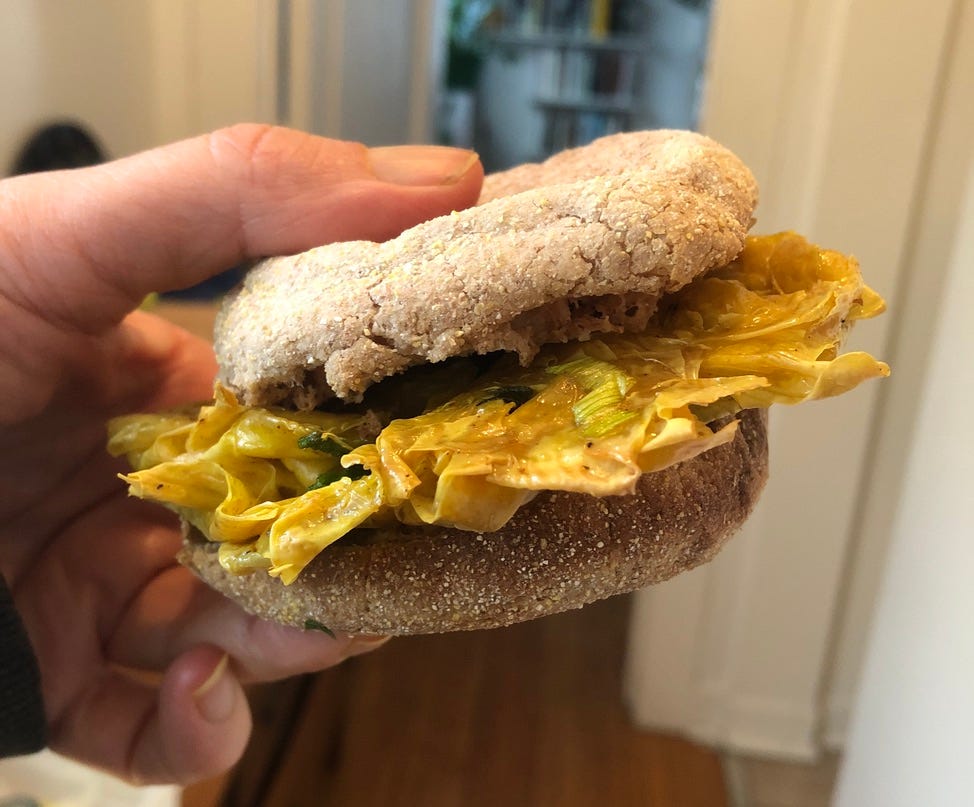
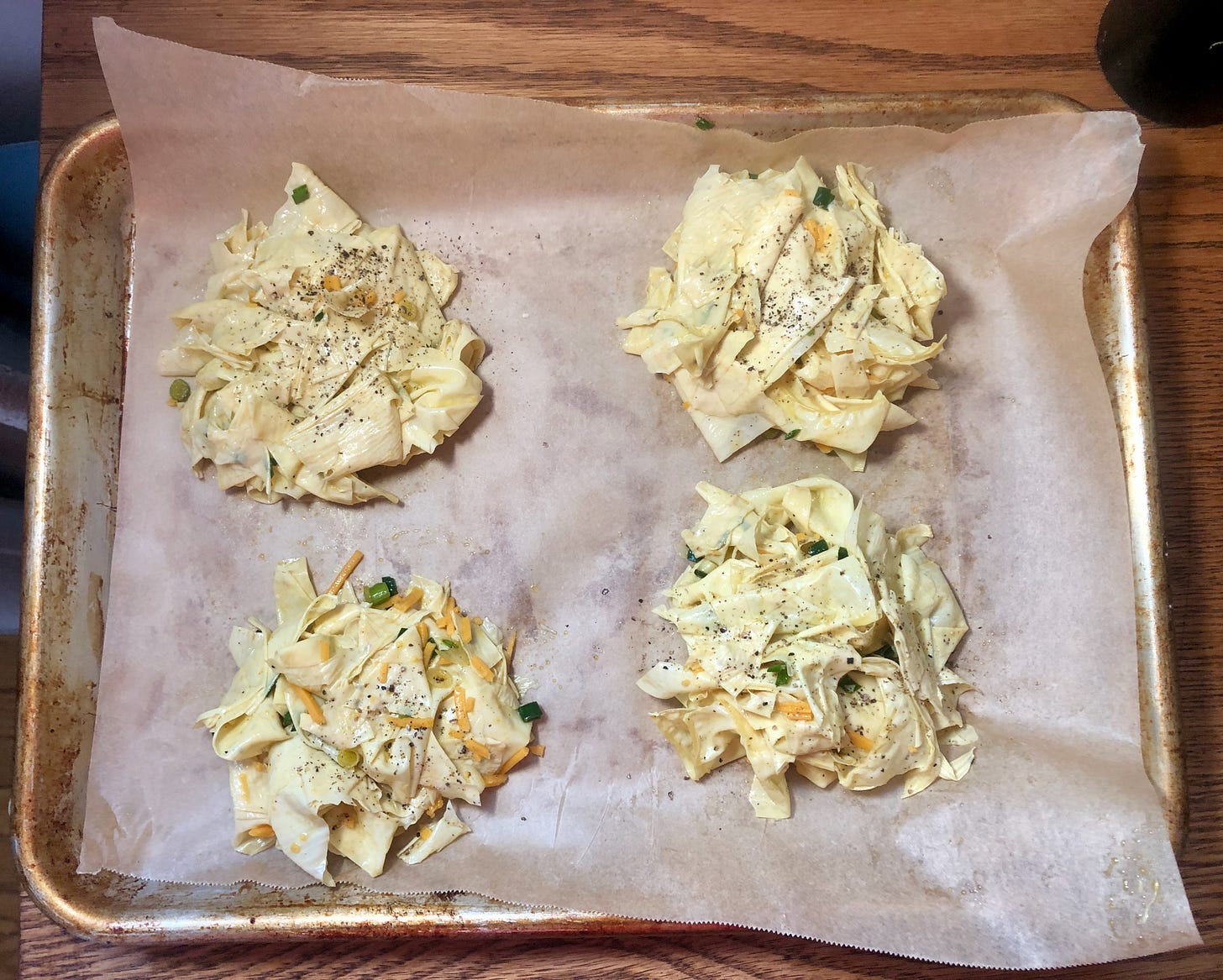
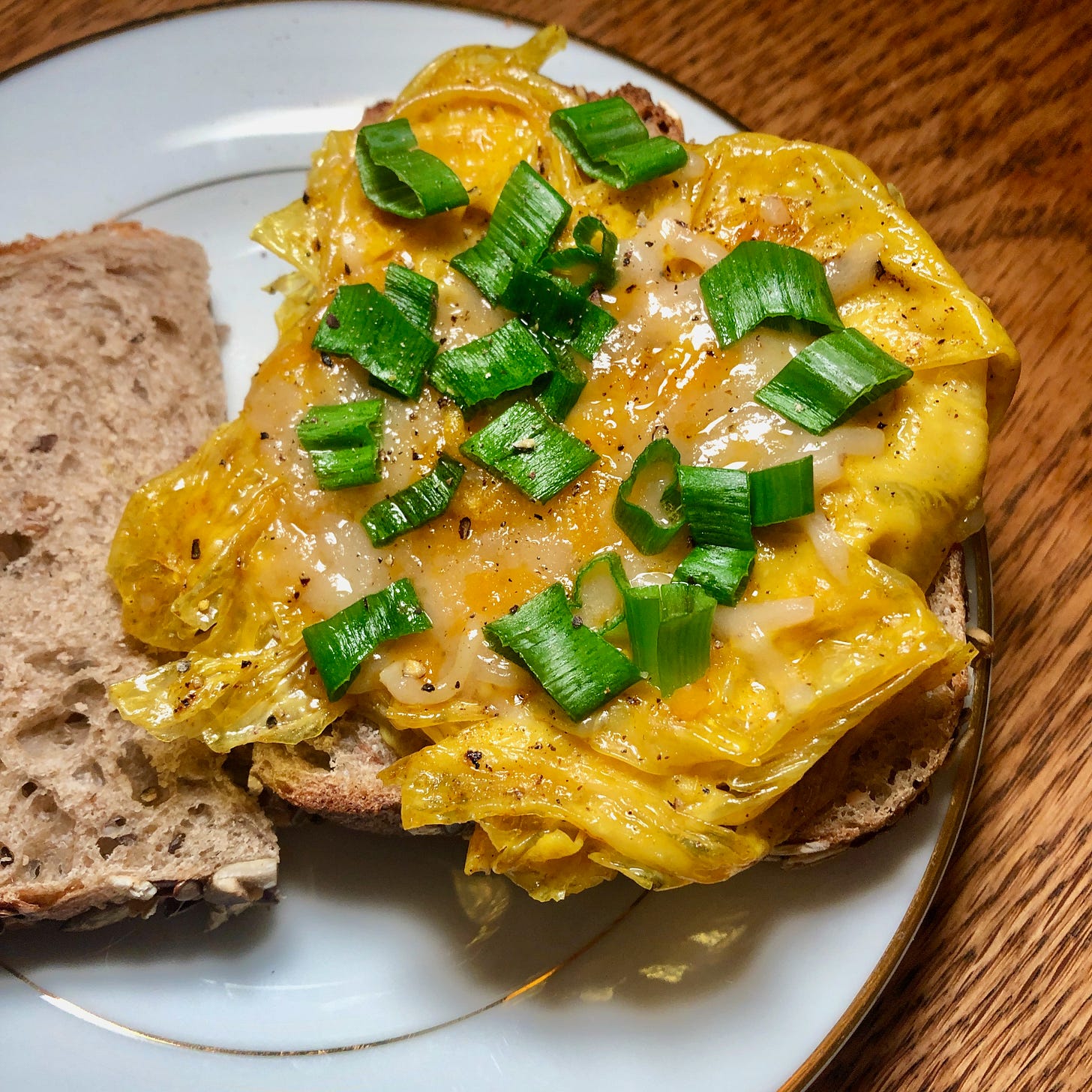
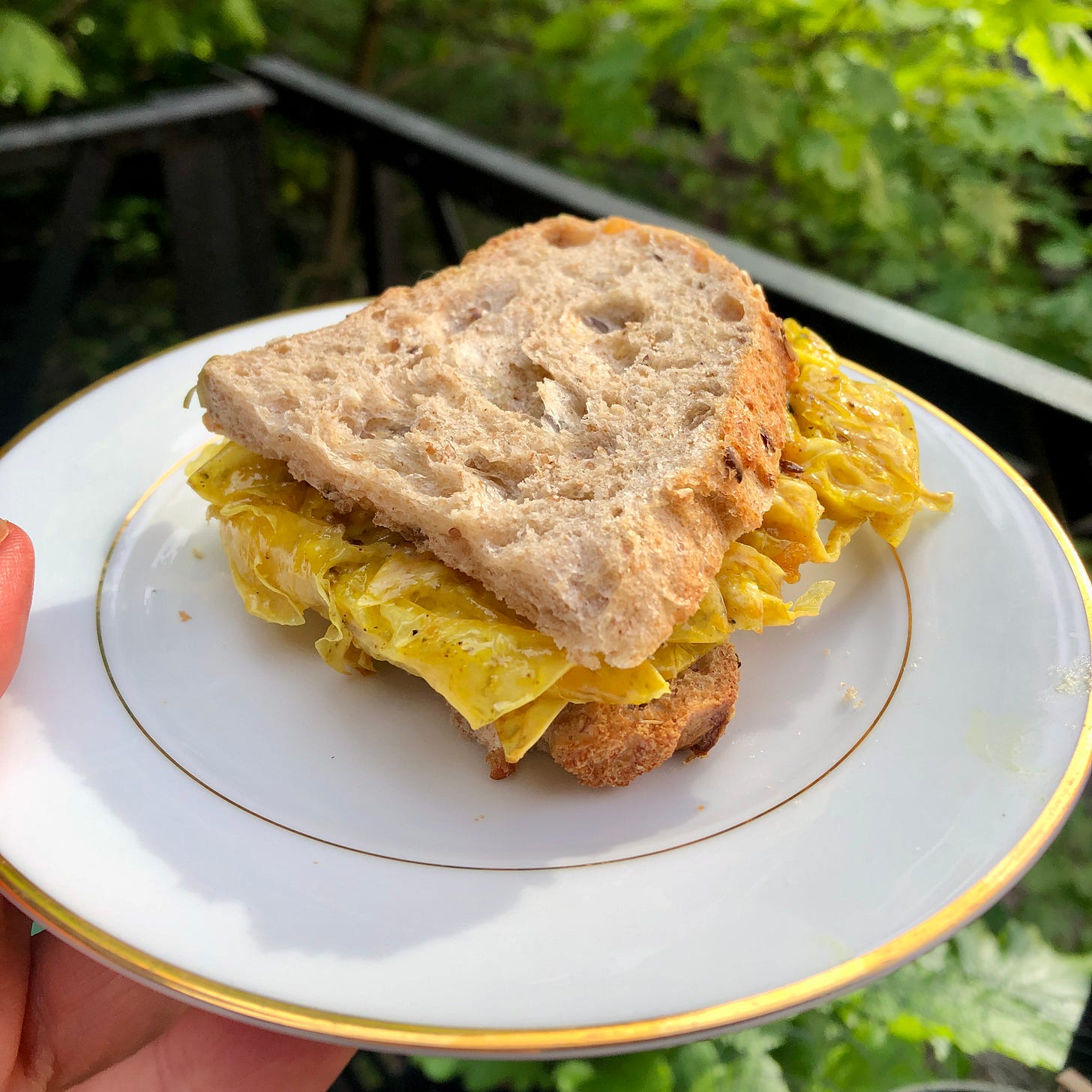
Ohhh i like the sound of this! Though admittedly at first i was a bit grossed out because i remember the skin that forms on dairy milk really made me...🤢 Didn't make the connection with chicken skin until i got to that part! i know so many non-vegans that are grossed out by chicken skin! Used to be my favourite bit 🥲 i wonder if you can get this at the big Chinese supermarkets we have here in the uk...
This all sounds so good, Julia. I'm writing you from 10 minutes from the Hodo factory, and should really spend more time with their products! Thanks for alerting us to so many delicious options.